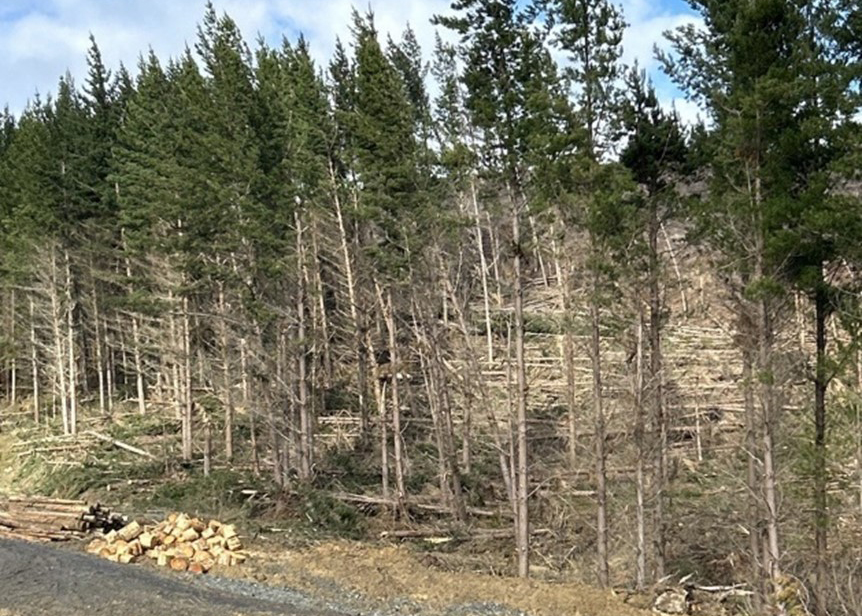Windthrow: trees uprooted or broken off by wind.
Bouts of prolonged rain, coupled with wind, over winter resulted in numerous unstable trees and windthrow scattered around Wenita’s forests.
This creates added risks, as trees can move unexpectedly and fallen trees may not behave as expected when being crosscut because they are under hidden tension.
Fortunately, we are in the enviable position where virtually all our felling is mechanised, and in steeper country the machines can be tethered. For that reason, we aim to avoid manual felling in windthrow.
Where manual felling is the only option, we have a range of safety measures, which include:
- The foreman and faller complete a management plan before starting work.
- Each windthrown tree is assessed individually.
- We do not work directly under wind-wrenched trees.
- The faller must have been recently assessed competent against NZQA Unit Standard 1270, which covers working in and salvaging windthrown trees.
- There should be a two-person felling team.
We only fell when we are confident it can be done safely. Our contractors always have the option of walking away if they consider it too dangerous (and of course they inform Wenita staff if the hazard remains).
Even with mechanised felling in windthrow areas, there is heightened risk, including root-ball holes, which are the depressions or holes left in the ground after a tree falls. Therefore, when using machines to fell in windthrow areas, our contractors reassess their felling plans each day or more frequently if circumstances change.
We also ask them to recognise and address any additional fatigue they might be experiencing due to constantly monitoring the risks posed by windthrow.


Recent Comments